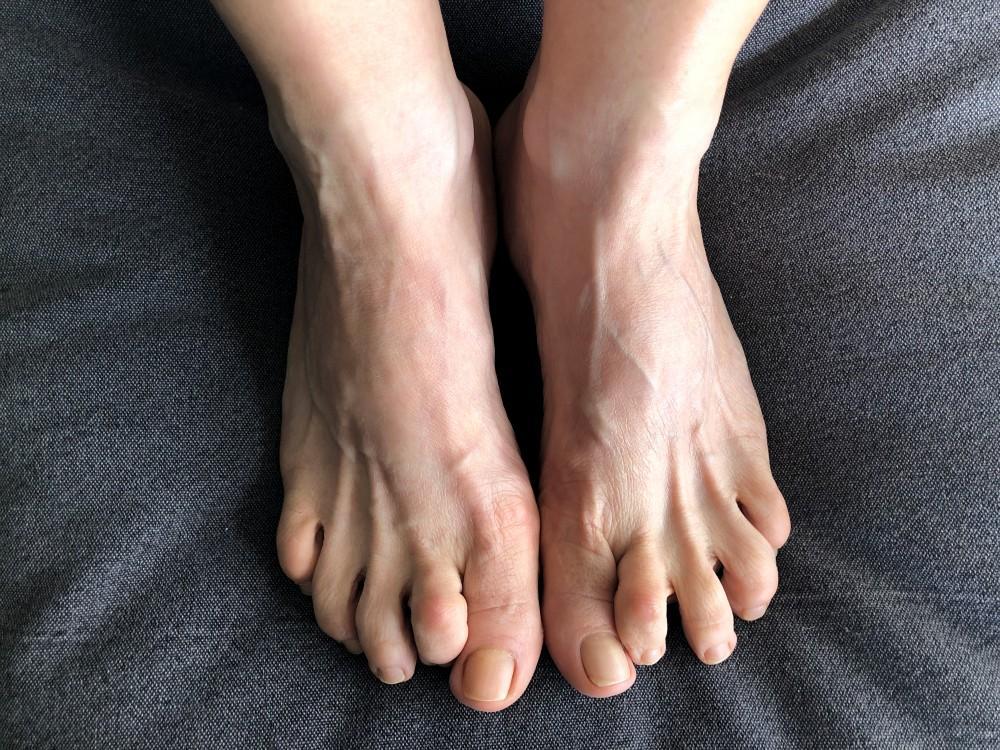People should see their healthcare provider if they have severe pain or the toe is stuck in a bent position. X-rays can help confirm the diagnosis. Over-the-counter (OTC) pain relievers and cortisone shots can alleviate the pain and swelling. Taping or using splints to hold the toe in a straighter position can change the muscle imbalance. Roomier footwear and shoe inserts or pads can also help.

Treatment
If you are suffering from a hammertoe it is important to get treatment right away. The condition is a toe joint deformity that makes the end of your middle toe (the proximal interphalangeal or PIP) joint bend downward. The toe then resembles a hammer or claw and may be painful. A hammer toe is often caused by an imbalance of the muscles and tendons around a joint. It can also be due to poor-fitting shoes, and arthritis or diabetes.
Mild hammertoes that are still flexible can usually be treated with a combination of techniques. Your doctor will examine and X-ray the affected area and determine how severe your hammer toe is and what treatment option is best for you.
A splint can help keep the toe straight and reduce pain and pressure on your toe. Padding and taping can also be helpful. Avoid high heels as these can make the hammer toe worse.
Surgery is an option for patients with a rigid hammertoe that do not respond to other treatments. Surgery involves removing the toe’s abnormal bent tip and reshaping the toe joint. The surgeon may also remove a small area of bone and use OSSIOfiber, a bio-degradable material that integrates with your body’s natural bone and helps to reinforce the surgical site. This method has been shown to be more effective than a traditional surgery called an arthrodesis or fusion procedure, which requires a long recovery period.
Prevention
Hammer toe develops when the muscles and tendons of one or more of your toes get imbalanced. Ill-fitting shoes and certain medical conditions, such as diabetes, can cause this imbalance.
If you have hammer toe, you should podiatrist Cheltenham (a doctor who specialises in treating feet and legs) right away. If your hammer toe is still flexible, a doctor may be able to straighten it with splinting and by massaging the toe and re-educating its muscle balance. He or she may also recommend wearing a shoe with a wide toe box and padding any prominent areas of the crooked toe to relieve pain and pressure. Over-the-counter drugs that reduce inflammation and swelling can also help.
If your hammer toe has become rigid, you will probably need surgery to correct it. There are several types of surgery to treat hammer toe, and your doctor will choose the one that is best for you.
Most health care professionals can diagnose hammer toe by examining your feet and toes and taking x-rays. However, if you have diabetes or decreased sensation in your feet, your health care professional will need additional tests to find out if there is an underlying condition causing the toe deformity. In this case, a health care professional will take a fluid sample from the affected toe joint for further testing.
Diagnosis
Doctors typically diagnose hammer toe by examining your feet and the affected toes. They will look for a toe that is bent at the middle joint and have contracted muscles, making it appear rigid. A mild case of hammer toe may be treated with splints or kinesiology tape (strips of special tape applied in specific ways) to keep the toe flexible, although this is unlikely to prevent it from becoming more curved over time.
Your doctor will gently move the toe and foot to assess its flexibility and whether there are signs of pain, such as corns (hard lumps that form on the skin) or calluses (areas of thickened skin). They will also ask you to walk, to see if the condition affects your gait, and whether it causes pain in the ball of the foot over the metatarsals. If symptoms include tingling or numbness, doctors can use ultrasound imaging to check for areas of nerve irritation in the toe joints, called neuromas.
The most effective way to prevent hammer toe is to wear shoes that fit properly. Shoes that are too tight in the toe box or have little or no arch support put a lot of pressure on your toes and toe muscles, which can cause them to become misaligned. Changing to shoes with a wider toe box and better arch support can help reduce your risk of developing hammer toe.
Surgery
If conservative treatments fail to relieve symptoms and the hammer toe worsens, surgery may be necessary. A podiatrist Seven Hills can recommend procedures to address the cause of the condition.
The procedure to treat a flexible hammertoe involves removing the excess tissue that is creating the deformity and straightening the toe. This is often done under a local anesthetic. Rigid hammertoes require surgery to correct the joint and release the excessive pressure on the affected toe. This is usually performed under general anesthesia but, for some people, a regional anesthetic or a local injection can be used instead.
A surgeon can also perform a surgical technique called tendon lengthening or transfer to help restore the balance of the toe muscles. This is a great option for people with a flexible hammertoe in its early stages. This procedure involves transferring the tendons from the bottom of the toe to the top of the toe to straighten the toe.
Another option for treating a rigid hammertoe is to fuse the affected joint. This surgery requires an incision and the surgeon removes any extra bone, then uses metal pins or screws to keep the toe joint aligned while it heals. In some cases, the surgeon will use a cadaver bone to fuse the joint. This surgery is less invasive than other hammertoe surgeries and is performed under local anesthesia, which can be beneficial for people who are squeamish or have a fear of needles.




